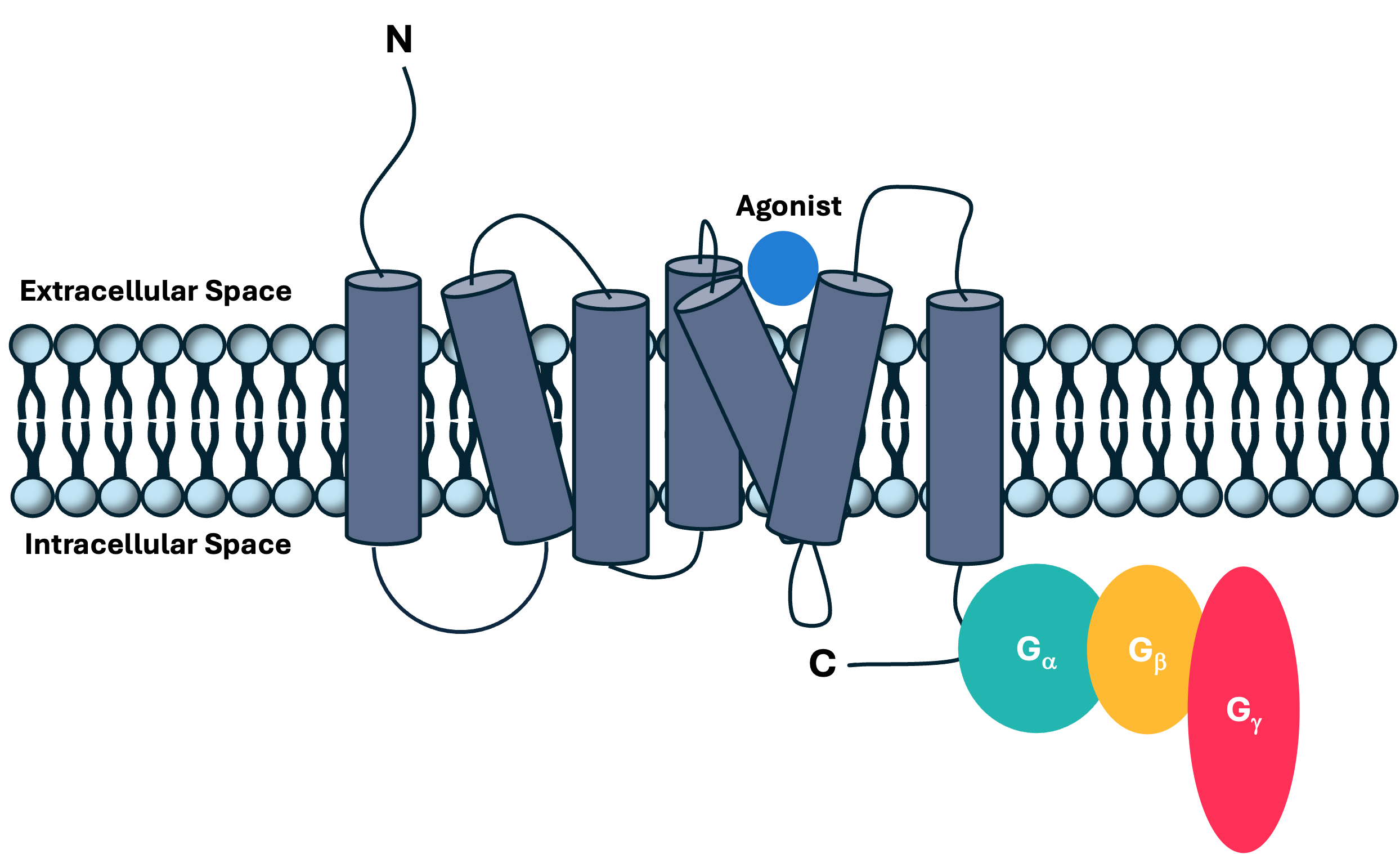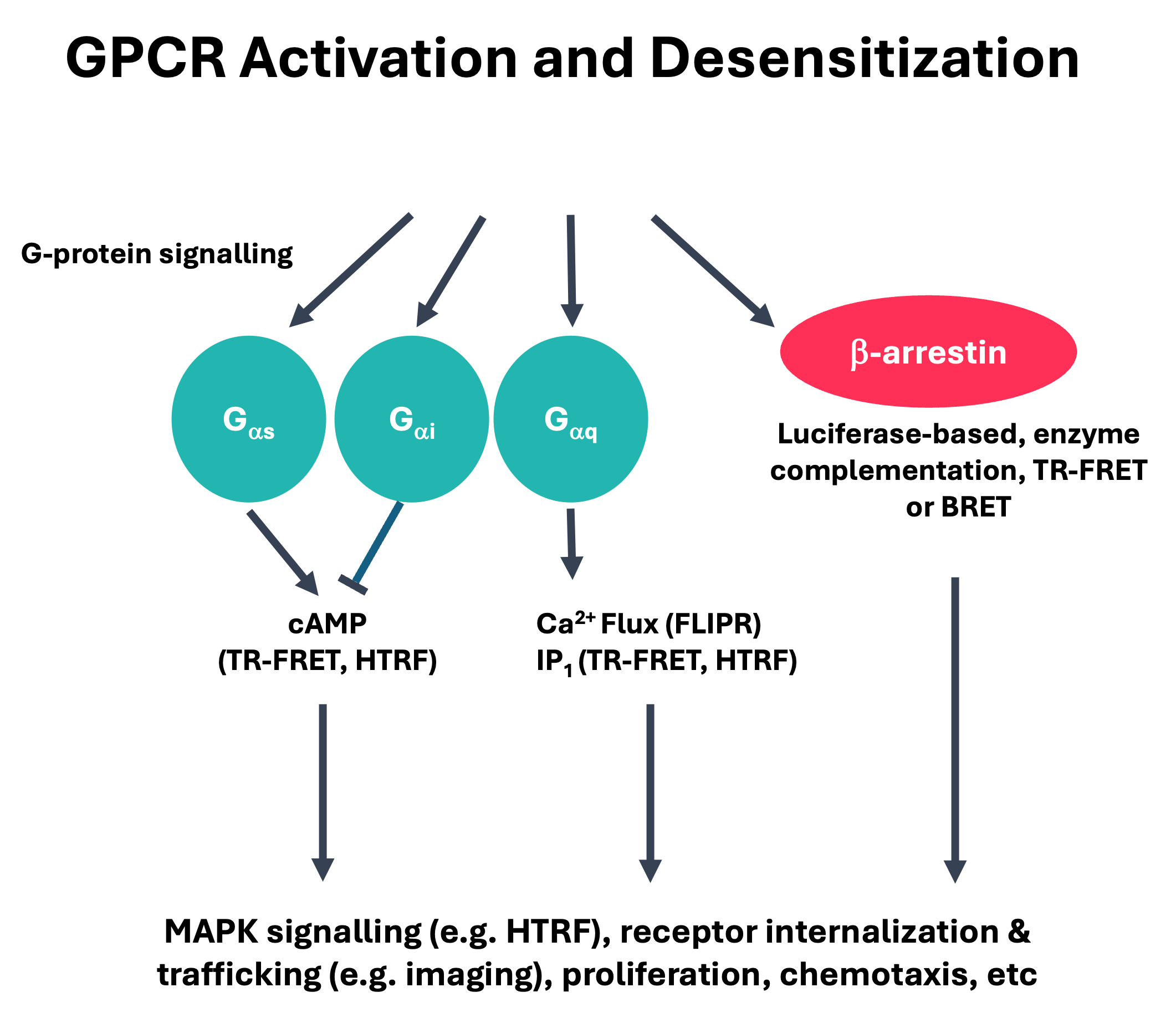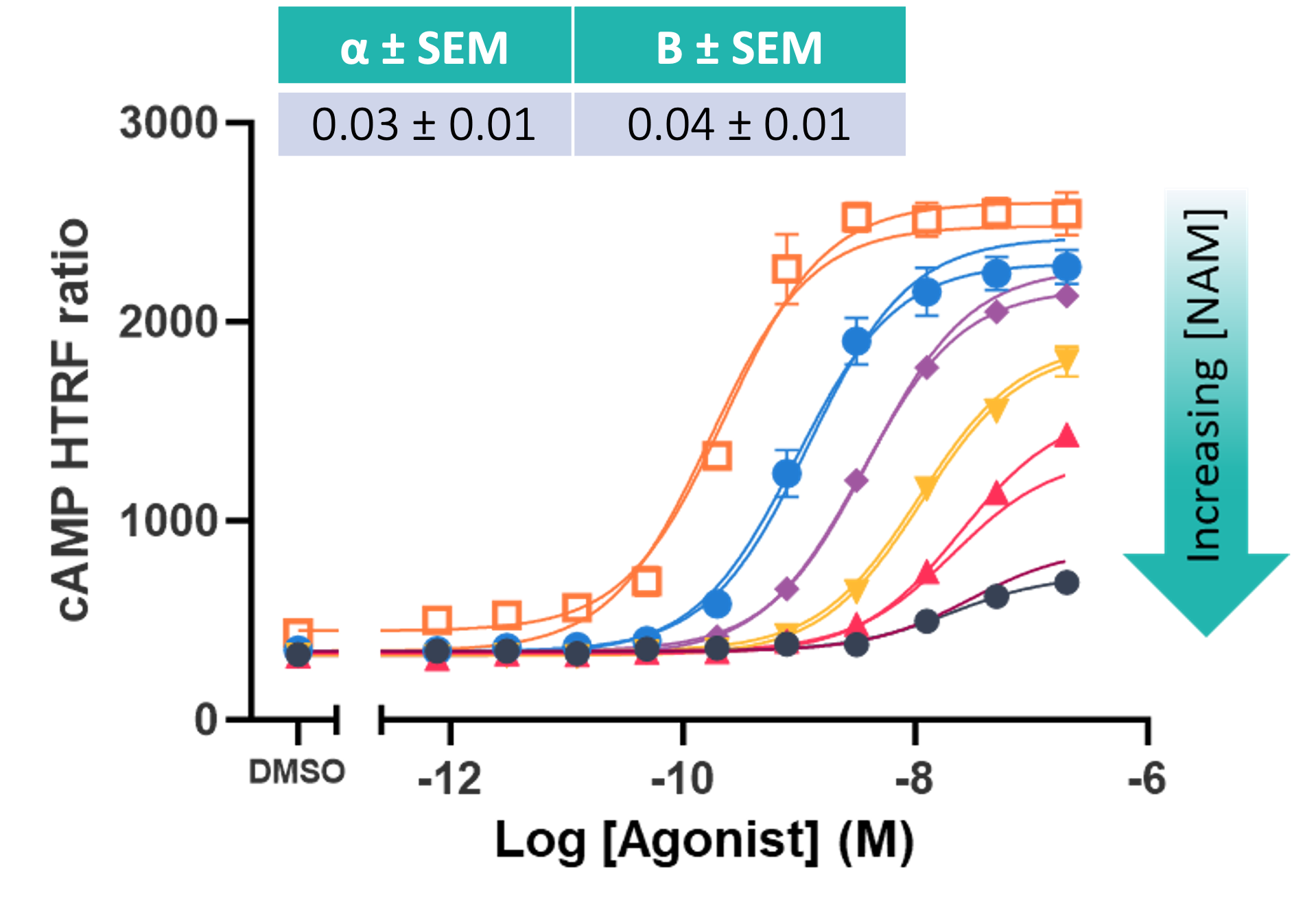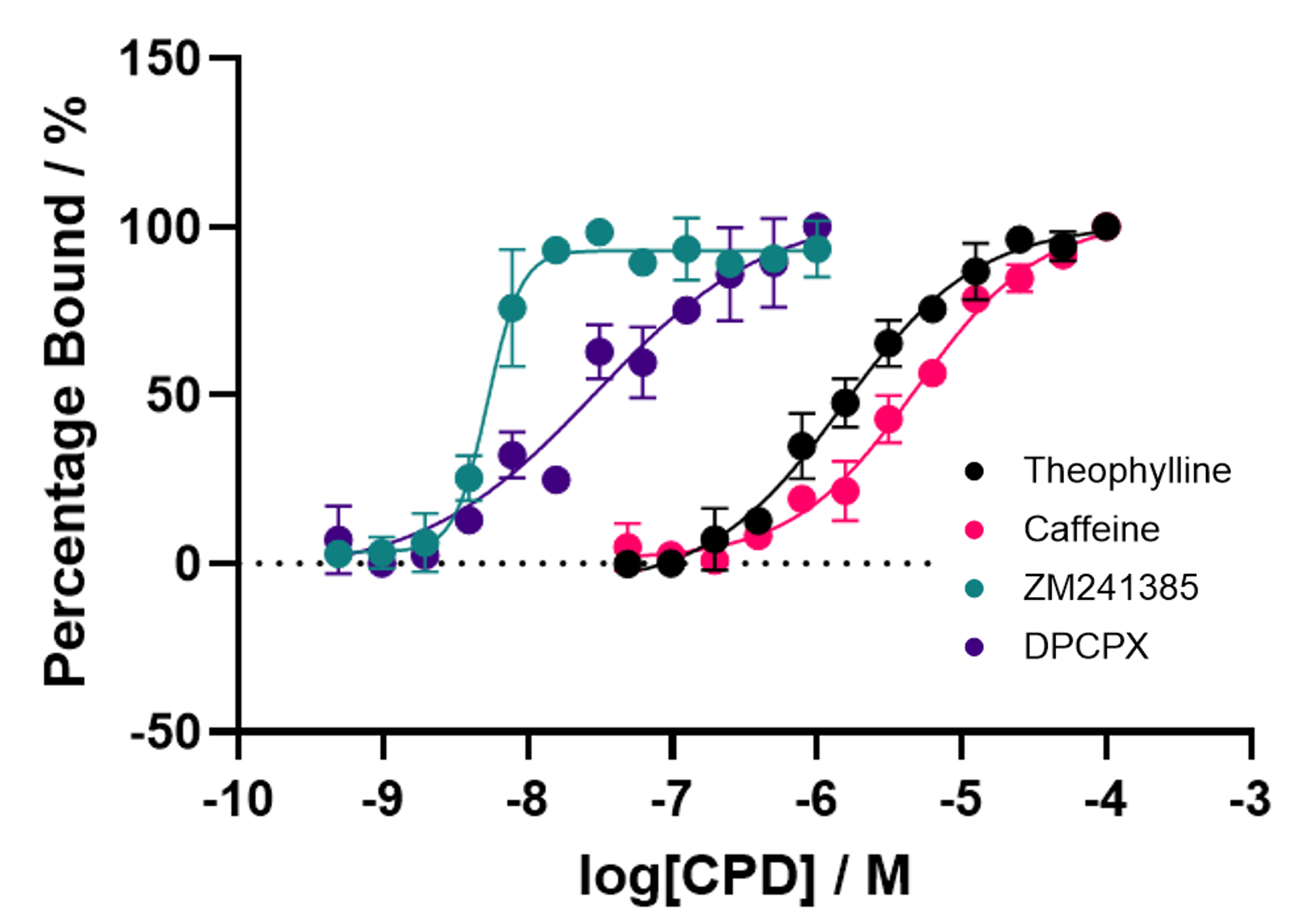- About
-
Solutions
-
Services
- Biosciences
- Chemistry
- Integrated Drug Discovery
- Computer Aided Drug Design
- Hit Identification
- Target Classes and Modalities
- Therapeutic Areas
-
A-Z
- A
- B
- C
- D
- E
- F
- G
- H
- I
- K
- L
- M
- N
- O
- P
- R
- S
- T
- V
- X
-
Services
- Library
- News & Events
- Careers
GPCRs
Multi-disciplinary expertise to drive your GPCR programme forward
With our experience in GPCR cellular pharmacology, hit identification, protein purification, biophysics, and drug design, Domainex scientists are perfectly placed to support your GPCR projects at all stages of preclinical development.
G protein-coupled receptors (GPCRs) are one of the largest classes of membrane proteins and are targets for approximately 35% of clinically-available drugs.1 Despite the rise of other target classes and drug types, small molecule targeting of GPCRs remains at the forefront for the treatment of numerous pathologies. Domainex has extensive expertise in computational and medicinal chemistry, protein production, assay development, in vitro screening and molecular pharmacology for GPCRs. For an example of an integrated programme, see our poster on our collaboration with Parkinson’s UK in which we successfully identified lead-like negative allosteric modulators of the C5aR1.
Many GPCRs are located in the CNS and are targets for CNS diseases such as Parkinson’s and Alzheimer’s disease. See our separate CNS page to find out more about our expertise in CNS drug discovery.

Figure 1: A schematic of a GPCR complex structure
Assay Development and Hit Identification
GPCRs signal via coupling to, and activating, hetero-trimeric G proteins (e.g. Gαi, Gαs and Gαq), which initiate diverse intracellular signalling cascades, often via multiple signalling pathways in response to a single ligand, driving ligand bias.
Depending on the project needs, Domainex can work with:
- Division-arrested cell lines expressing the GPCR of interest (for smaller scale project)
- Commercially available stable cell lines
- Stable cell lines generated in house (wild-type or tagged GPCR)
We leverage our in-house expertise of cellular biology and molecular pharmacology to develop bespoke assays to study most secondary messenger and intracellular signalling pathways and assess bias signalling and allostery.
- cAMP modulation
- Ca2+ mobilisation (FLIPR, Inositol Phosphate (IP1)accumulation)
- β-arrestin recruitment, internalisation and trafficking (imaging and flow cytometry)
- Downstream signalling (MAPK, chemotaxis, proliferation)

Figure 2: The assays systems that are typically developed for the various signalling pathways

Figure 3: Example concentration response curve (CRC) data obtained upon 5-hydroxytryptamine (5-HT)-induced activation of various 5-hydroxytryptamine receptors (5-HTRs) expressed in CHO-K1 cells
Pharmacological Mechanism of Action analysis
Understanding detailed mechanism of action for GPCRs is key for progression through lead optimisation to help interpret structure-activity relationships (SAR), guide compound design and determine functional selectivity. Domainex regularly provides in-depth analysis for compounds acting via various mechanisms against GPCRs, including;
- Allosteric function (negative and positive allosteric modulators, NAMs, PAMs, Ago-NAM, Ago-PAM)
- Agonists (full and partial), antagonists, inverse agonists
- Binding or functional kinetics (on/off rate determination)
- pA2 analysis

Figure 4: Example of a dose-shift assay for a negative allosteric modulator (NAM), quantifying α and β values to measure the effect of the compound modulating orthosteric affinity (KA) and efficacy (τA). Data is fitted with both a four-parameter logistic model and the operational model of allostery
GPCR Purification and Biophysics
Expressing recombinant, wild-type GPCRs and purifying them in their native confirmation has long been a technically demanding challenge. Domainex scientists have a breadth of experience with membrane protein expression, purification and biophysics. We work with our clients to provide a tailored solution for their target and application.
- Established membrane protein purification platform, optimised for GPCRs
- High quality QC for a range of downstream applications, e.g. structural biology of antibody generation
- Biophysical screening assays suitable for
- Hit ID screening (see our case study on fragment screening against the A2a receptor and Figure 5)
- Binding affinity determination for small molecules and biotherapeutics

Figure 5: Spectral Shift assay affinity binding curves for four known A2aR small molecule ligands
Reference
- Sriram K, Insel PA. G Protein-Coupled Receptors as Targets for Approved Drugs: How Many Targets and How Many Drugs? Mol Pharmacol. 2018 Apr;93(4):251-258. doi: 10.1124/mol.117.111062. Epub 2018 Jan 3. PMID: 29298813; PMCID: PMC5820538.
Domainex was selected following an extensive review process on the basis of their experience and capability to execute a fully integrated drug discovery project, including the development of neuroinflammation assays and the optimisation of our compounds’ target engagement in the brain.
Dr Richard Morphy, Drug Discovery Manager at Parkinson’s UK
Case studies
Start your next project with Domainex
Contact one of our experts today